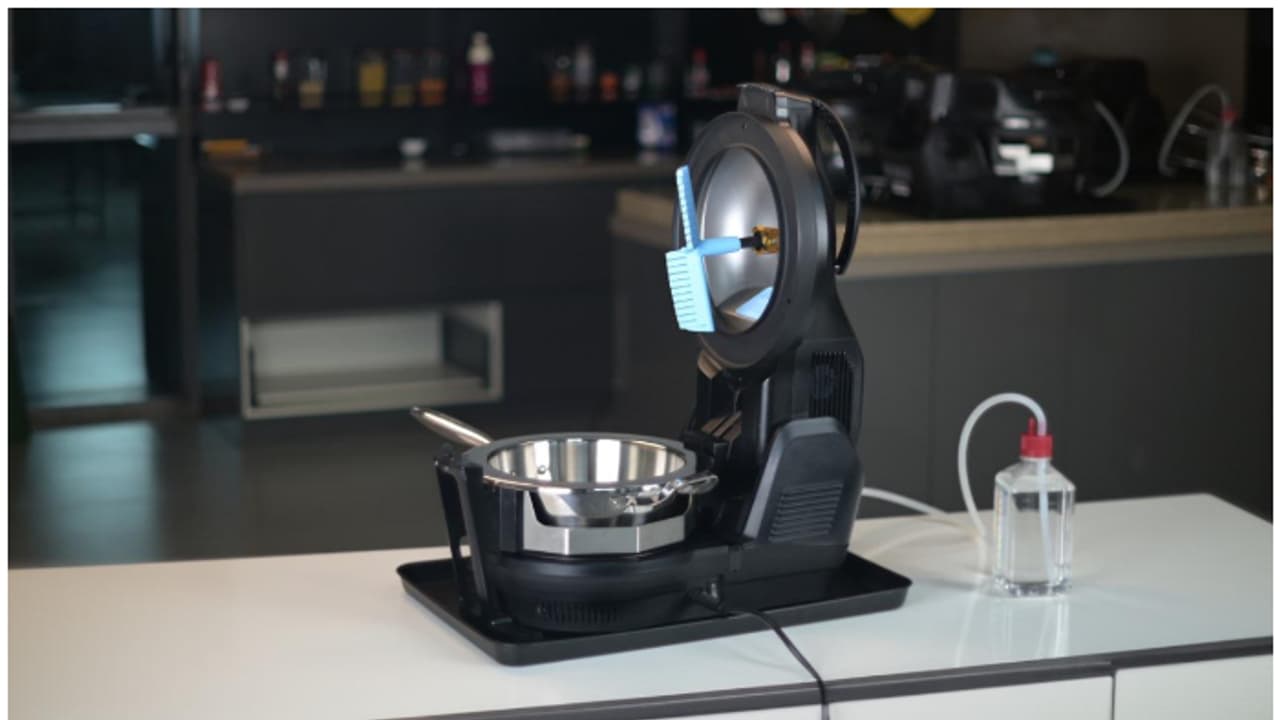AI-based combination cooking technology optimizes energy use in commercial kitchens by blending microwave, flame, and induction methods, reducing cooking time, energy costs, and waste.
A commercial kitchen is much more than a cooking space, rather it is a dynamic & strategic initiative focused on maximizing efficiency, aiding the overall profitability as well as enhancing sustainability. In the bid to make the overall cooking ecosystem increasingly energy efficient, numerous attempts are being made at the macro level, such as the scientific exploration of solar cooking potential in Switzerland based on energy balance equations. However, at the micro and nano levels, such efforts can be effectively aided by the industry by being adaptable and forthcoming towards newer inventions like the combination cooking technology.

A core component of restaurants, cloud kitchens, QSRs, casual dining spaces, etc is a host of energy-intensive appliances that consume ample amounts of energy, resulting in dwindling commercials and compromised business. Despite such kitchens investing in the most efficient units possible, like energy-saving labeled stoves, appliances, microwaves, etc, it often remains inconclusive in optimizing the energy consumption. At the moment, AI-based combo cooking technology is really helpful in this situation. While space optimization is just 30% in the case of a microwave, it is generally seen as a crucial difference in making any device energy efficient. But in a device with AI-based combination cooking technology, which marries microwave and flame/induction cooking, 90% of the overall space is used to cook the food, thereby yielding at least 3x times better energy absorption due to design and space optimization.
Most products in the kitchens are either flame or electricity-based, both of which have limitations varying on the variability of the power source. But a device based on combination cooking tech, with the 6-inch flame from the bottom, works with 60% more efficiency as against 12000 BTUs of energy in a conventional stove. The microwave from the lid further makes it 90% more energy efficient as against 2 kilowatts or 7000 BTUs in a conventional induction or microwave. While energy from flame and what you can draw from electricity are both regulated and limited, combining the two allows 2.5 times the energy in the same container.
In a conventional microwave oven, the ambient temperatures are generally the room temperatures to start with. Even when the food items are cooked and are close to 90°C, the ambient temperature inside the microwave chamber is generally less than 40°C. If the ambiance and food temperature increase to around 90° in a short period, the penetration depth of microwaves becomes almost 2 1/2 times, reducing the cold spots drastically in the cooked food. The AI-based combination cooking provides energy through flame or induction along with microwaves, helping food reach high temperatures swiftly, thereby enhancing multifold the efficacy of two traditional cooking methods.
Ranging from 10 to 25 minutes, preheating leads to substantial energy wastage, with devices kept on despite being actively used for less than 10% of the time. The need of the hour, especially in the frying segment, is equipment that minimizes wasted energy and optimizes preheating times, a device based on the patented combination cooking technology that eliminates the need of multiple cooking devices. For example, Samosa can be directly deep fried from frozen within 2.5 to 4 minutes, depending upon the size and quantity (maximum up to 15) with at least 40% less oil & fat consumption, allowing kitchens to save nearly 100 liters of oil every month. Similarly, no pre-heating time is required for frozen dumplings, and can be readied in just 4 minutes starting with a cold pan. Grilling too is equally convenient with no heating time and minimum shrinkage due to integrated water spray for steam creation.
The technology directly impacts food particles with energy from the magnetron, eliminating the need to heat a medium for heat transfer. Besides, with a remarkable cooking time of just 180 seconds directly from frozen, this technology ensures quick and efficient food preparation, thereby minimizing waste and energy. The AI-based combination cooking technology enables Automation to help B2B brands grow by making their output consistent and repeatable. An AI-powered app further helps automate recipes, adds water automatically, and simplifies cleaning, showcasing a cumulative potential to boost profits by 15-20% each month. With this technology in place, a business can save space, energy, and money, irrespective of whether it's quick-service restaurants, cloud kitchens, restaurants, caterers, hotels, or resorts.
The solution combines microwave cooking, which cooks food from the inside out, and induction or flame cooking, which cooks food from the outside in. The result for a commercial kitchen is getting any food cooked in one-third of the usual time, saving at least 40% on energy costs, all while the food retains water-soluble nutrients, vitamins, texture, structure, and color because it is cooked quickly without needing to add water for most foods except cereals. The future of cooking is indeed AI-based combination cooking technology and it has arrived.
This article has been authored by Sanandan Sudhir, Founder and CEO, On2Cook and edited by Nancy Tiwari, Asianet Newsable.
